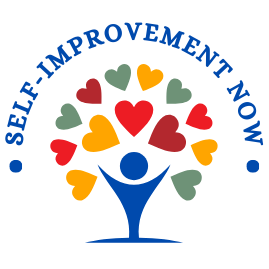10 Work-Life Balance Tips for a Happier Life
Balancing work and personal life feels like juggling two worlds, and let’s face it, it’s often a losing battle. You’re not alone in wanting more freedom from work responsibilities while still giving your best. In today’s crazy-paced routine, where work emails chase us into bed, finding that elusive work-life balance isn’t just a wish—it’s a must. By focusing on achievable work-life balance tips, not only can you boost productivity, but you can also finally enjoy those moments without the nagging work thoughts. Whether you’re working from home or stuck in a cubicle, these practical tips will guide you to create a healthier balance in your life. Get ready to find the time you didn’t think you had, and reclaim parts of your day for yourself and the ones you love. Here’s the first step to feeling more in control.
For more insights, check out this video: 10 Habits to Follow for a Better Work-Life Balance.
Establish Clear Boundaries
In this ever-blurring world of work and personal life, establishing clear boundaries is like drawing a line in the sand. It helps separate the hustle of work from the comfort of home, ensuring you can swim in both seas without feeling overwhelmed. Just as a runner needs a track, creating distinct lines can help you find your way to a more balanced life.
Set Work Hours
Imagine trying to play a board game without clear rules. Chaos, right? That’s what living without set work hours feels like. By defining specific work hours, you create a framework that keeps tasks in their place. This doesn’t just compartmentalize your work and personal time; it gives you the space to breathe.
- Consistency is Key: Sticking to a routine helps your body and mind know when it’s time to focus and when it’s time to relax. Over time, you’ll notice that setting work hours can be as calming as tea on a rainy day.
- Communicate with Clarity: Make sure to communicate your work hours clearly with colleagues. This transparency prevents misunderstandings and helps you achieve a better work-life balance.
Limit Work Communication
Ever heard of the phrase “out of sight, out of mind”? This rings true when it comes to work communication during off-hours. Muting work notifications is like putting blinders on a horse—it helps you focus on personal activities without constant distractions.
- Mute for Mindfulness: Use do-not-disturb settings on your phone during personal hours to give yourself the freedom to be present at the moment. You’d be surprised how much joy can come from a simple dinner without email pings.
- Establish Offline Times: Let your team know your offline hours. This doesn’t mean you’re shirking responsibilities; it means you’re recharging your batteries to come back stronger.

Photo by Markus Winkler
Creating physical and mental boundaries is not just about drawing lines but building a healthier and more fulfilling life. Start today, and give yourself the gift of balance.
Master Time Management
Trying to balance work and leisure isn’t easy, right? But good time management might be the secret sauce you need. When you manage your time well, you can actually squeeze more out of each day—not physically, but in terms of productivity and relaxation. Imagine having time to finish your projects and still enjoy a cup of tea while binge-watching your favorite show. Here are some ways to make time management work for you.
Prioritize Tasks
Ever feel like you’re drowning in your to-do list? That’s where the Eisenhower Matrix steps in like a superhero. This tool is all about helping you figure out what’s truly important and what can wait. Picture a simple square divided into four smaller squares.
Here’s how it works:
- Urgent and Important: Do these tasks immediately.
- Important but Not Urgent: Schedule them for later.
- Urgent but Not Important: Delegate them if you can.
- Neither Urgent nor Important: These tasks are your time-wasters; ditch them.
By breaking down your tasks, you take control of your time rather than letting your tasks control you. Want to delve deeper into this method? Check out this guide on the Eisenhower Matrix for more insights.
Use Scheduling Tools
You’ve got a smartphone, so why not use it to organize your time? Scheduling tools are your best friends when you want to keep track of meetings, tasks, and even downtime. Tools like Todoist and Trello can really change the game.
Here’s what they can do:
- Reminders: Alert you about appointments and deadlines.
- Customization: Tailor your schedule the way you like it.
- Syncing: Keep everything in harmony across devices.
Not using these tools is like having a Swiss Army knife but only using it to cut bread. Want to discover the best tools out there? Check this review of time management apps that could work wonders for you.
Figuring out how to manage your time can totally transform how you balance your job and your social life. It helps you focus on what matters and gives you more freedom to enjoy those small, ordinary moments.
Incorporate Regular Breaks
Taking regular breaks is like giving your brain a refresh button. When you work non-stop, your focus tends to drift, and productivity can take a hit. That’s why building breaks into your day isn’t just a nice-to-have; it’s essential. Let’s explore some practical ways to incorporate breaks that help balance your work and life.
Implement the Pomodoro Technique

One of the most effective methods for incorporating breaks into your daily routine is the Pomodoro Technique. This approach is like slicing your work time into neat little pieces. Work for 25 minutes, and then enjoy a 5-minute break. Repeat this cycle four times, and then take a longer break—say, 15 to 30 minutes.
Here’s why it’s worth trying:
- Fights Procrastination: Knowing you’ll get a break soon can help you stay motivated and avoid putting things off. Learn more about the method’s benefits here.
- Improves Focus: By dedicating short bursts of concentration, you can accomplish more without feeling overwhelmed. It’s almost like magic how it coaxes your mind into sharp focus.
- Prevents Burnout: Those micro-breaks help you refresh, reducing exhaustion. With less fatigue, you find yourself ready to tackle more tasks with ease. More on the Pomodoro Technique here.
Take Time Off
When was the last time you truly unplugged? While short breaks are great, sometimes your body and mind crave a full reset, like a holiday or staycation. Scheduling vacations or personal days isn’t just indulgence; it’s a vital part of maintaining work-life harmony.
Reasons to book that time off:
- Mental Recharge: Stepping away from work helps you declutter your mind. Just like computers need rebooting to run smoothly, our minds crave the same. See more on how vacations can boost your well-being.
- Enhanced Productivity: Oddly, taking time off can make you more productive. Upon returning, fresh perspectives lead to heightened creativity and efficiency. Read about the health benefits here.
- Personal Discovery: Use this time to reflect and reconnect with things that matter outside work. It’s an opportunity to re-engage with passions that fuel your soul.
Regular breaks may seem like small interruptions, but they can transform your workday into a more balanced and fulfilling experience. By using strategies like the Pomodoro Technique and embracing time off, you provide your mind with the breath of fresh air it needs to thrive.
Prioritize Self-Care
Finding the right work-life balance can feel like juggling fire. But here’s a lifeline—prioritize self-care. With the hustle and bustle of daily life, it’s easy to forget about taking care of ourselves. Yet, focusing on self-care can lead to better mental and physical health. When you feel good, you’re not just surviving the workday—you’re thriving. But how exactly do we go about this? Let’s break it down.
Maintain a Healthy Lifestyle
 Photo by RDNE Stock project
Photo by RDNE Stock project
Maintaining a healthy lifestyle is the backbone of effective self-care. Regular exercise, a balanced diet, and sufficient sleep are not just buzzwords; they are a necessity. Imagine running a marathon. Could you do it with a broken leg or empty stomach? Probably not. The same goes for your everyday life.
- Exercise Regularly: Engage in some form of physical activity every day. Whether it’s a brisk walk, a swim, or an online yoga session, moving your body helps reduce stress and boosts energy levels. Studies show that even a short daily walk can improve your mood significantly.
- Balanced Diet: Eating well isn’t just about sticking to a diet; it’s about nourishing your body. Fill your plate with fruits, vegetables, and lean protein. This doesn’t have to be a punishment—explore new recipes or try a new fruit each week.
- Get Enough Sleep: Sleep is the ultimate recharger, yet it’s often the first thing we cut back on. Aim for 7-9 hours of quality sleep per night. Treat sleep like an important meeting you can’t miss.
Healthy living supports your work-life balance tips, making you feel competent and in control.
Engage in Hobbies
Life can’t just be about spreadsheets and deadlines. Imagine having a canvas where you can paint your mood or a book that whisks you to another universe. This is where hobbies enter the scene.
- Explore Your Interests: Whether it’s gardening, reading, playing an instrument, or knitting, find something that makes you tick. Hobbies are a great way to unwind and express yourself creatively.
- Make Time for Fun: Schedule time for your hobbies just like you would for work meetings. This way, you’re more likely to stick to it. Plus, hobbies can be a great way to connect with others who share your interests.
- Disconnect: When engaging in your hobby, practice being present. This is your chance to disconnect from work, allowing your mind to rest and rejuvenate.
By putting self-care at the center of your life, you create more room for joy and less stress. Want more insights? Discover some self-care strategies to find balance in your everyday routine.
Keep these tips up your sleeve, and watch your work-life balance transform into something sustainable and joyful.
Conclusion
Balancing work and life isn’t just a nice-to-have; it’s essential for your well-being and happiness. Our ten practical work-life balance tips focus on setting boundaries, managing your time effectively, and prioritizing what truly matters. These strategies aren’t just ideas; they’re actions you can take today to make your life healthier and more fulfilling.
Think about which tips resonate with you the most and start implementing them. Maybe it’s setting firmer work boundaries or carving out more time for family or personal hobbies. Making these changes might feel small now, but they can lead to significant improvements over time.
Remember, your journey toward work-life balance is personal; there’s no one-size-fits-all approach. Keep exploring and adjusting until you find what works best for you. We’d love to hear your thoughts and experiences! Share them in the comments or start a conversation with your friends or coworkers. Your insights can help others striving for the same goal.
Thank you for being a part of this discussion. Stay tuned for more insights that help navigate both the complexities of work and the joys of life in harmony.



